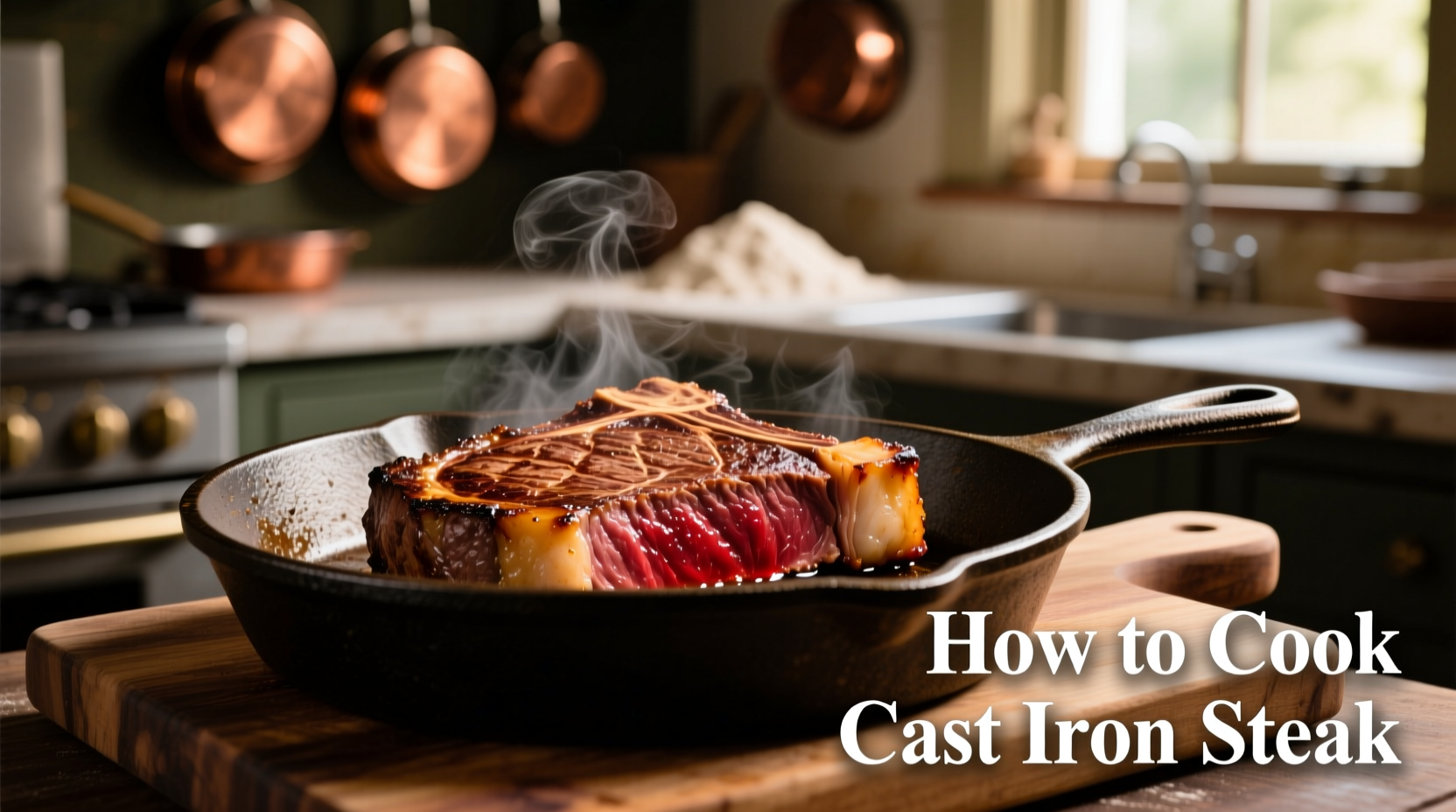Master the Art of Cast Iron Steak Cooking in 7 Simple Steps
Nothing beats the sizzle of a perfectly cooked steak in a blazing hot cast iron skillet. This method delivers an irresistible crust while maintaining a juicy, tender interior. Whether you're a beginner or looking to refine your technique, this guide provides everything you need for flawless results every time.
Why Cast Iron Wins for Steak Cooking
Cast iron's exceptional heat retention and distribution create the perfect environment for developing that coveted Maillard reaction - the chemical process responsible for rich flavor and beautiful browning. Unlike other pans, cast iron maintains consistent high heat even when a cold steak hits the surface, preventing steam formation that would inhibit proper searing.
Step 1: Selecting and Preparing Your Steak
Choose cuts at least 1½ inches thick for best results - ribeye, New York strip, or filet mignon work perfectly. Thinner cuts overcook before achieving proper crust. Remove steak from refrigerator 45-60 minutes before cooking to bring it to room temperature. This ensures even cooking throughout.
| Doneness Level | Internal Temperature | Visual Characteristics |
|---|---|---|
| Rare | 120-125°F | Bright red center, cool throughout |
| Medium Rare | 130-135°F | Warm red center, soft texture |
| Medium | 140-145°F | Warm pink center, slightly firm |
| Medium Well | 150-155°F | Small amount of pink, firm texture |
| Well Done | 160°F+ | Little or no pink, very firm |
Source: USDA Food Safety and Inspection Service temperature guidelines
Step 2: Seasoning for Maximum Flavor
Pat steak thoroughly dry with paper towels - moisture is the enemy of proper searing. Generously season with coarse kosher salt (about 1 teaspoon per pound) and freshly ground black pepper. For thicker cuts (2 inches+), consider the reverse sear method: season and refrigerate uncovered for 24-48 hours to dry-age at home, enhancing flavor and texture.
Step 3: Preheating Your Cast Iron Skillet
Place your skillet on the stove over medium-high heat for 5-7 minutes until it reaches 450-500°F. Test readiness by sprinkling a few drops of water - they should instantly evaporate and dance across the surface (Leidenfrost effect). Never preheat empty cast iron on high heat as this can damage seasoning.
Step 4: The Perfect Sear Technique
Add 1-2 tablespoons of high smoke-point oil (avocado, grapeseed, or clarified butter) to the hot skillet. Carefully place steak in the skillet away from you to avoid oil splatter. For best results when cooking cast iron steak, resist the urge to move the steak for the first 3 minutes - this allows proper crust formation. Flip only once using tongs, never a fork which pierces the meat.

Step 5: Managing Thickness and Doneness
For steaks 1½ inches or thinner, cook entirely on stovetop. For thicker cuts, after searing both sides, transfer skillet to a 400°F oven until desired internal temperature is reached. Use an instant-read thermometer for accuracy - this is the most reliable method for determining steak doneness when cooking cast iron steak.
Step 6: Essential Resting Period
Transfer steak to a cutting board or warm plate and tent loosely with foil. Rest for 5-10 minutes (longer for thicker cuts). This critical step allows juices to redistribute throughout the meat. Cutting too soon releases precious juices onto the plate rather than staying in the steak.
Step 7: Finishing Touches for Restaurant-Quality Results
For extra flavor, add a pat of compound butter during the last minute of cooking or while resting. Thinly slice against the grain for optimal tenderness. Serve immediately while hot for the best experience of your perfectly cooked cast iron steak.
Common Mistakes to Avoid When Cooking Steak in Cast Iron
- Using wet meat - always pat steak dry before seasoning
- Overcrowding the pan - cook one steak at a time for proper sear
- Flipping too often - allow 3-4 minutes per side for crust development
- Cooking straight from refrigerator - room temperature ensures even cooking
- Cutting too soon - resting is non-negotiable for juicy results
When Cast Iron Isn't the Best Choice
While ideal for most steaks, cast iron has limitations. For very thin cuts (under 1 inch), a stainless steel pan may provide better temperature control. When cooking multiple thin steaks for a crowd, a grill might be more efficient. And for delicate fish fillets, non-stick is preferable. But for that perfect crust on quality beef cuts, nothing beats a well-seasoned cast iron skillet.
Troubleshooting Your Cast Iron Steak Results
Problem: Steak sticks to the pan
Solution: Ensure proper preheating and sufficient oil. Don't move steak too soon.
Problem: Uneven browning
Solution: Check pan heat distribution - rotate steak 90 degrees halfway through first side.
Problem: Burnt exterior but raw interior
Solution: Lower heat slightly and consider reverse sear method for thick cuts.











 浙公网安备
33010002000092号
浙公网安备
33010002000092号 浙B2-20120091-4
浙B2-20120091-4